European Travels: Berlin, Germany – Memories and New Discoveries
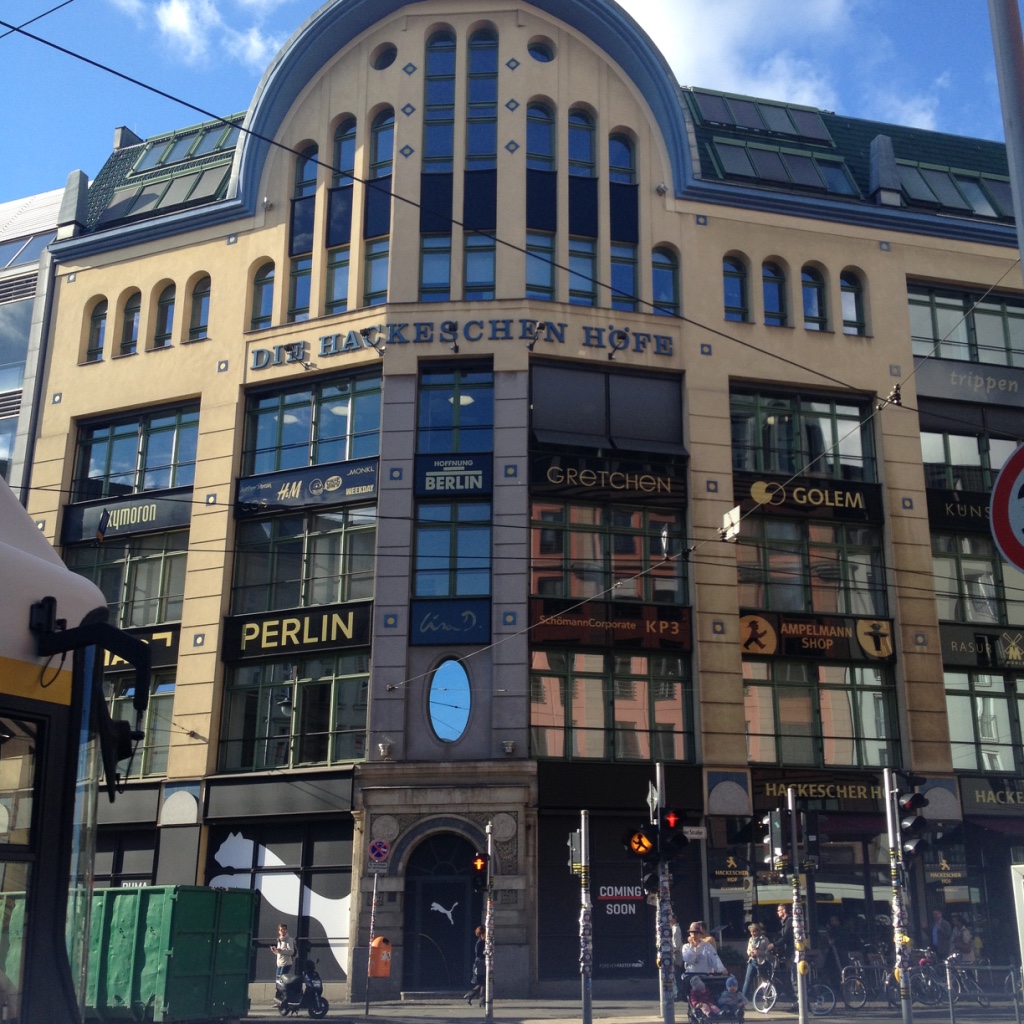 (updated 4/22/2017) Readers of my recent travel memories post From Stralsund to Usedom, know that since Germany's Reunification in 1990, Usedom has again become “die Badewanne der Berliner” (the bathtub of Berliners). This is not surprising, as it took us less than two hours to drive from Heringsdorf to Berlin.
(updated 4/22/2017) Readers of my recent travel memories post From Stralsund to Usedom, know that since Germany's Reunification in 1990, Usedom has again become “die Badewanne der Berliner” (the bathtub of Berliners). This is not surprising, as it took us less than two hours to drive from Heringsdorf to Berlin.
We rented an apartment in “Berlin-Mitte” near the Alexanderplatz and the Hackeschen Höfe (see picture left), a neighborhood we had gotten to know well during our stay there in December 2005. This time, however, instead of Christmas markets, we frequented outdoor restaurants and cafés.
Berlin – Travel Memories of Past Stays
I had been in Berlin several times before. My first visit, I described in The Berlin Wall and Memories of a Frightened Teenager. Even now, I remember those events quite clearly.
Berlin September 2001
A later visit - this time together with my wife Ulrike - will likely stay with us forever: When we checked in at our hotel late morning on September 11, the hotel clerk seemed preoccupied. He suggested that we turn on the TV in our room, as “something's happening in New York.”
Then, just when we turned on the TV, we saw the plane hit the second tower ... Needless to say except for our memories of witnessing this horrific event on TV, we remember very little from that stay.
Berlin December – January 2005/2006
Our month-long stay, from early December 2005 to early January 2006, was to make up for the ill-fated visit in 2001. And, we certainly made the most of it:
We enjoyed the wonderful Christmas markets (picture right), visited museums and churches, attended opera and theater performances, watched German movies, went up on the TV Tower at the Alexanderplatz, strolled down Kurfürstendamm, Berlin's premier shopping street, explored the Nikolaiviertel, etc.
On New Year's Eve, after a performance of the “Merry Widow” operetta, we experienced the wild firework celebrations around the Brandenburger Tor.
Berlin September 2015
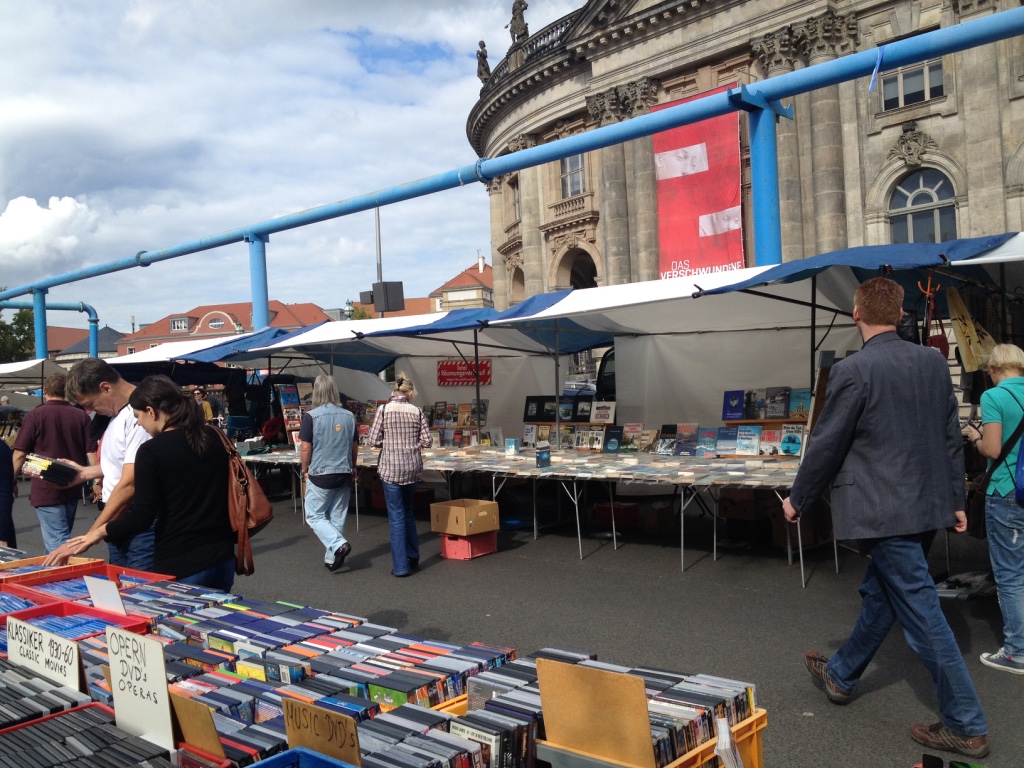 As we walked around the neighborhood, we recognized many of the stores and cafés around the Hackesche Markt S-Bahn station. We found our favorite bakery and movie theater. Both hadn't changed much. We also went back to the “Sophieneck” restaurant, our favorite hangout from before - which now was even better because it has become smoke free.
As we walked around the neighborhood, we recognized many of the stores and cafés around the Hackesche Markt S-Bahn station. We found our favorite bakery and movie theater. Both hadn't changed much. We also went back to the “Sophieneck” restaurant, our favorite hangout from before - which now was even better because it has become smoke free.
On Saturday we strolled through the familiar Antique and Book Market at the Bode Museum. (This flea market - see left picture - plays an important role in our German 2 course, “Blüten in Berlin?”). Lunch in the “Pergamon Keller” didn't work out, though. The restaurant (also featured in our course) was closed that day.
Berlin - New Discoveries
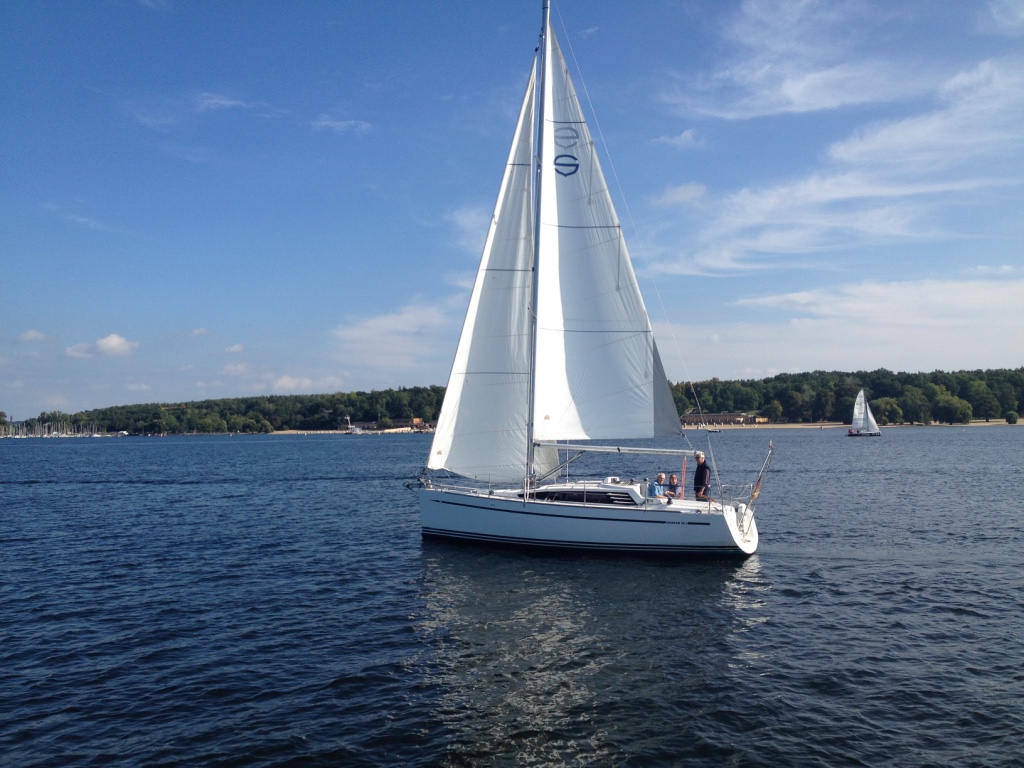 The pleasure of visiting Berlin again allowed us to catch up on a few experiences that we had missed before and make some new travel memories. One of them was a visit to Potsdam via a boat trip on the Wannsee.
The pleasure of visiting Berlin again allowed us to catch up on a few experiences that we had missed before and make some new travel memories. One of them was a visit to Potsdam via a boat trip on the Wannsee.
Berlin is surrounded by lakes and waterways. You can actually get by boat to the North Sea, the Baltic Sea, even the Mediterranean, from Berlin.
My father had owned a small sailboat on the Wannsee during his student years and always talked about it.
Potsdam and Sanssouci
Taking advantage of the warm late-summer weather, we set out to explore Potsdam and Sanssouci. We took the S-Bahn to the Wannsee station. (S-Bahn means “Stadtschnellbahn,” but depending on whom you ask, the “S” stands for “Stadt” (City) or “schnell” (fast)!)
Boat trip to Potsdam
At a Wannsee dock, we joined a few other passengers on a boat to Potsdam. We all sat on the sunny deck as our boat made its leisurely way onto the Havel River, into connected lakes, and past various islands.
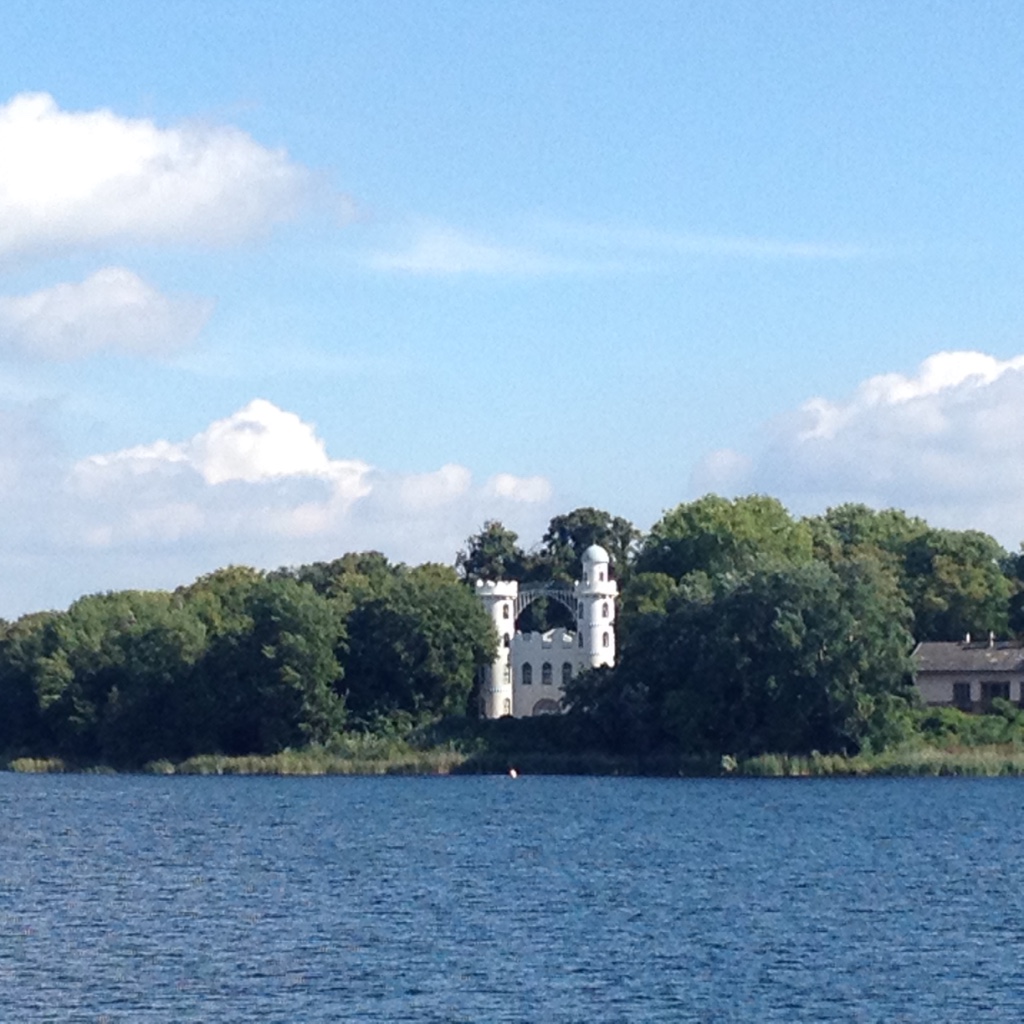 The ship's captain entertained us with many interesting tales about the islands, buildings, monuments, and sites we passed. The Pfaueninsel (Peacock Island) in the Havel River, now a Unesco World Heritage Site, was a favorite of Prussian King Friedrich II, who had a little “Lustschloss” (pleasure castle) built on it for himself and his mistress, in the mid 1790s. (see picture)
The ship's captain entertained us with many interesting tales about the islands, buildings, monuments, and sites we passed. The Pfaueninsel (Peacock Island) in the Havel River, now a Unesco World Heritage Site, was a favorite of Prussian King Friedrich II, who had a little “Lustschloss” (pleasure castle) built on it for himself and his mistress, in the mid 1790s. (see picture)
His successor, Friedrich III, turned the island into a model farm and zoo with exotic animals, in the early 1820s. He even allowed access for the people of Berlin. The people's interest led Friedrich IV to transfer all the animals to the first German zoo, the Berlin Zoo, in 1844.
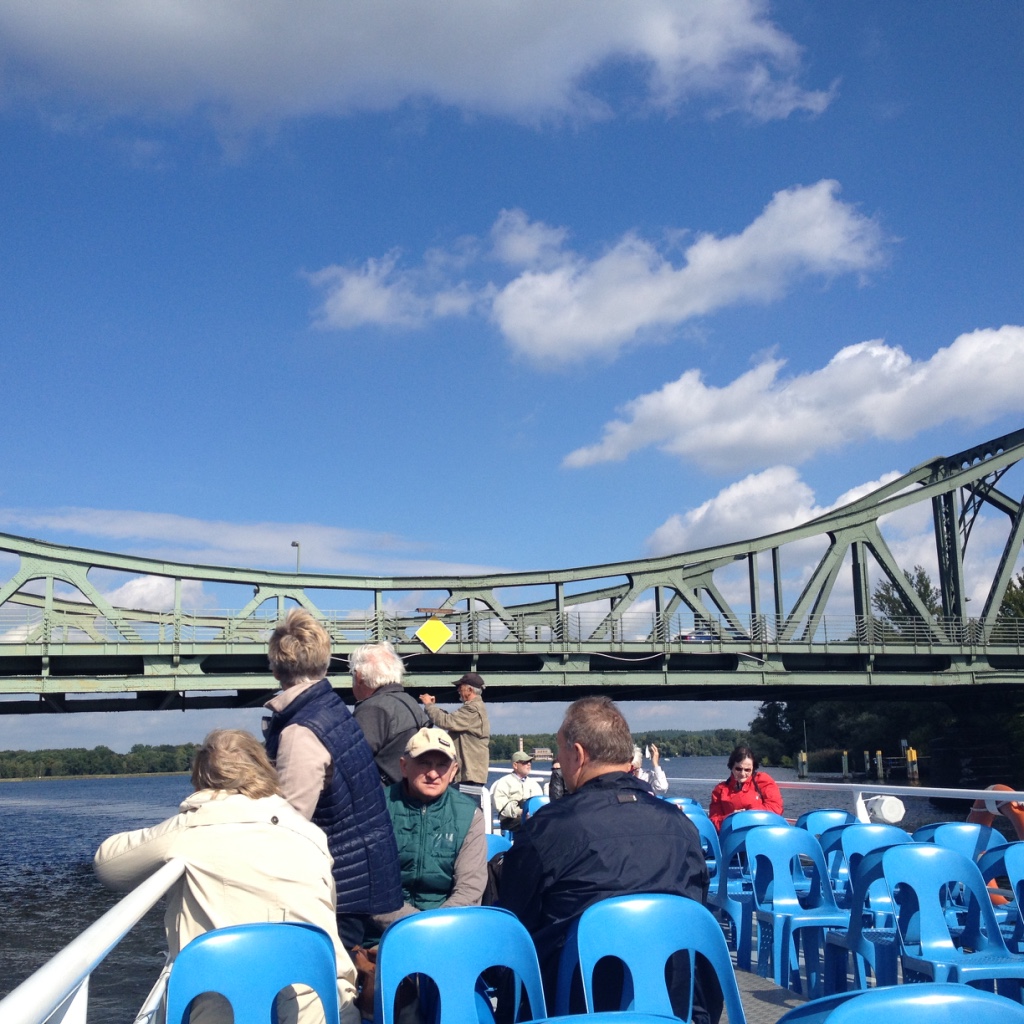 To create a real “beach” for the nearly one-mile-long “Freibad” Wannsee in 1908, many loads of beach sand were brought in from the Baltic Sea.
To create a real “beach” for the nearly one-mile-long “Freibad” Wannsee in 1908, many loads of beach sand were brought in from the Baltic Sea.
The Cecilienhof, on the shore of the Jungfernsee was the site of the Potsdam conference in July 1945, nine weeks after Germany's unconditional surrender in May 1945.
The Glienicke Bridge, (see picture) under which we passed, connects the state capital of Potsdam with the federal capital of Berlin. It became known during the Cold War as the point where secret agents were exchanged. The bridge also appeared often in novels and movies (e.g. John le Carré's 1979 novel “Smiley's People,” and Spielberg's 2015 movie “Bridge of Spies.”)
Potsdam
Potsdam was important in German history. As the residence of Prussian kings and the German emperor until 1918, it developed into a major center of culture and science in the 19th century.
Potsdam was inside the Russian zone after 1946 and therefore, after the wall was built, separated from West Berlin.
Today it is again the capital of the state of Brandenburg. Heavily damaged during World War II, many of Postdam's historic buildings were torn down during GDR times. We could admire several of the buildings that were reconstructed after Reunification, for example the City Palace and the St Nicholas' Church.
Sanssouci
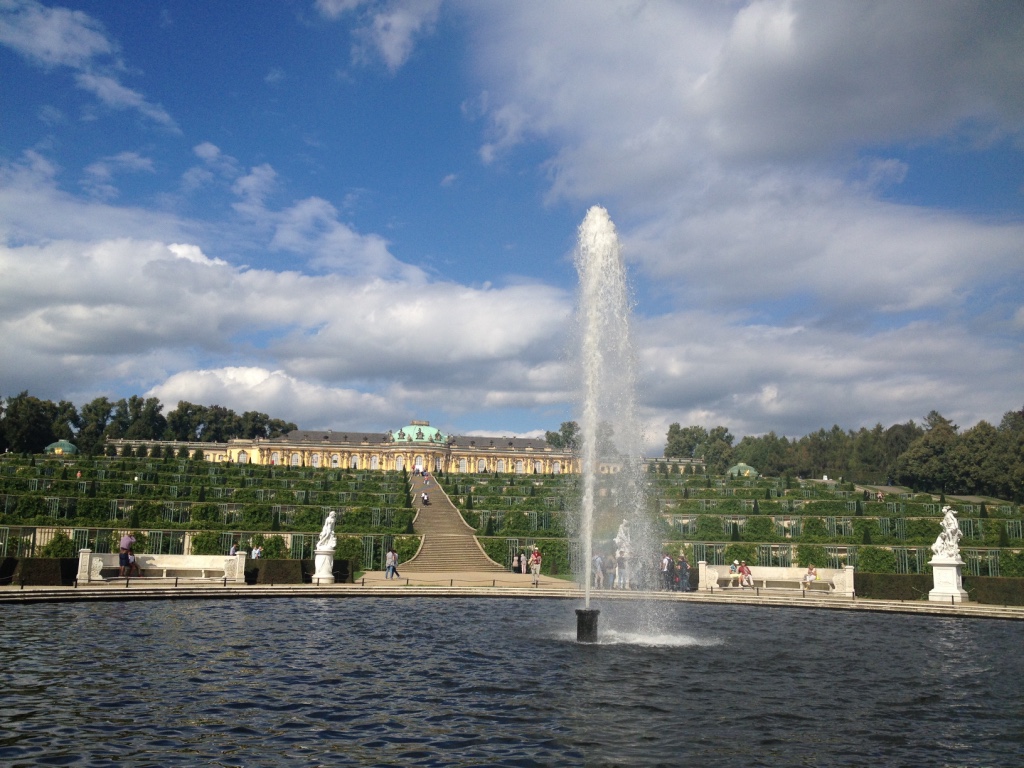 French speakers will immediately understand that the name “Sanssouci” means “without worries.” It was indeed the palace that Frederick the Great (1712-86) enjoyed the most. The palace was completed in 1747 and became his private residence, where he could relax in the company of people he liked.
French speakers will immediately understand that the name “Sanssouci” means “without worries.” It was indeed the palace that Frederick the Great (1712-86) enjoyed the most. The palace was completed in 1747 and became his private residence, where he could relax in the company of people he liked.
With its Rococo style, Sanssouci (picture left) is often called the German Versailles. However, the palace is unusual because it is a one-story structure connecting a row of 10 rooms. These face south and overlook a terraced vineyard and a large park.
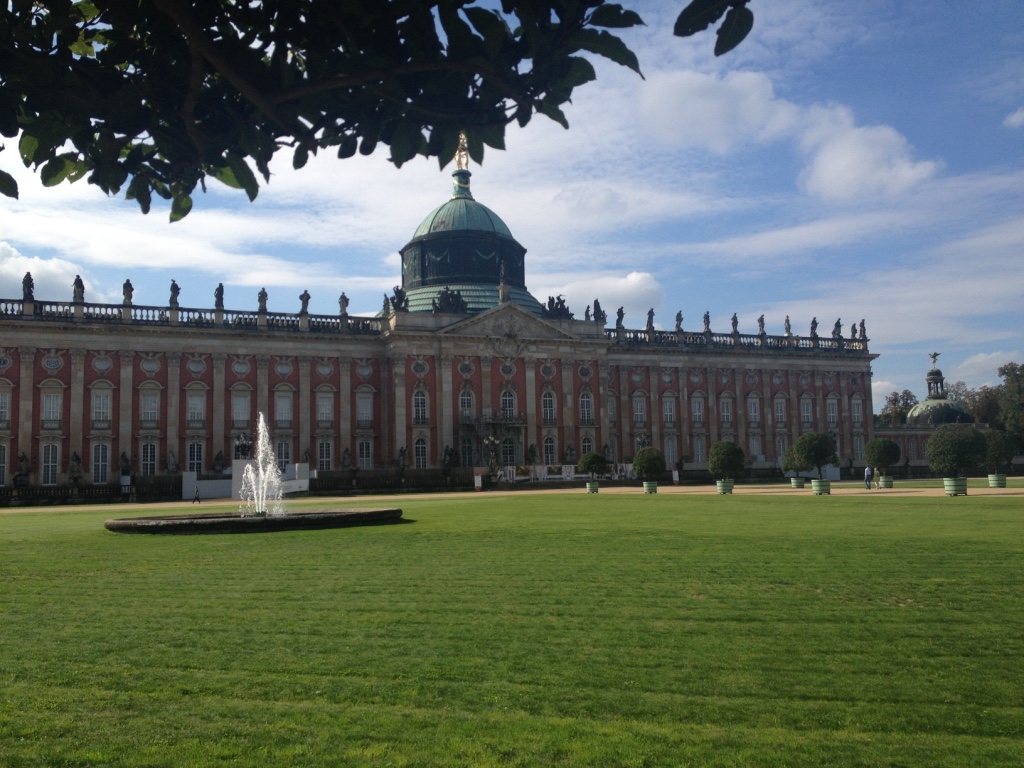 Some 20 years later, Frederick had the much bigger “Neues Palais” (New Palace) built on the west side of the park (picture right). Although he always preferred to live in Sanssouci, he apparently felt the need to show off his power and might with a more pompous palace.
Some 20 years later, Frederick had the much bigger “Neues Palais” (New Palace) built on the west side of the park (picture right). Although he always preferred to live in Sanssouci, he apparently felt the need to show off his power and might with a more pompous palace.
His son, Frederick III, who succeeded him in 1797, preferred the “Pfaueninsel” (see above), and did not spend much time in Sancoussi.
You can easily fill a whole day exploring the extensive Sanssouci park with its various buildings and structures: the Sanssouci Picture Gallery, the Wind Mill, the Orangerie, the Chinese House etc.
(In 1990, Sanssouci with its gardens became a UNESCO world heritage site. You can find more information in this English Wiki.)
Bauhaus Museum
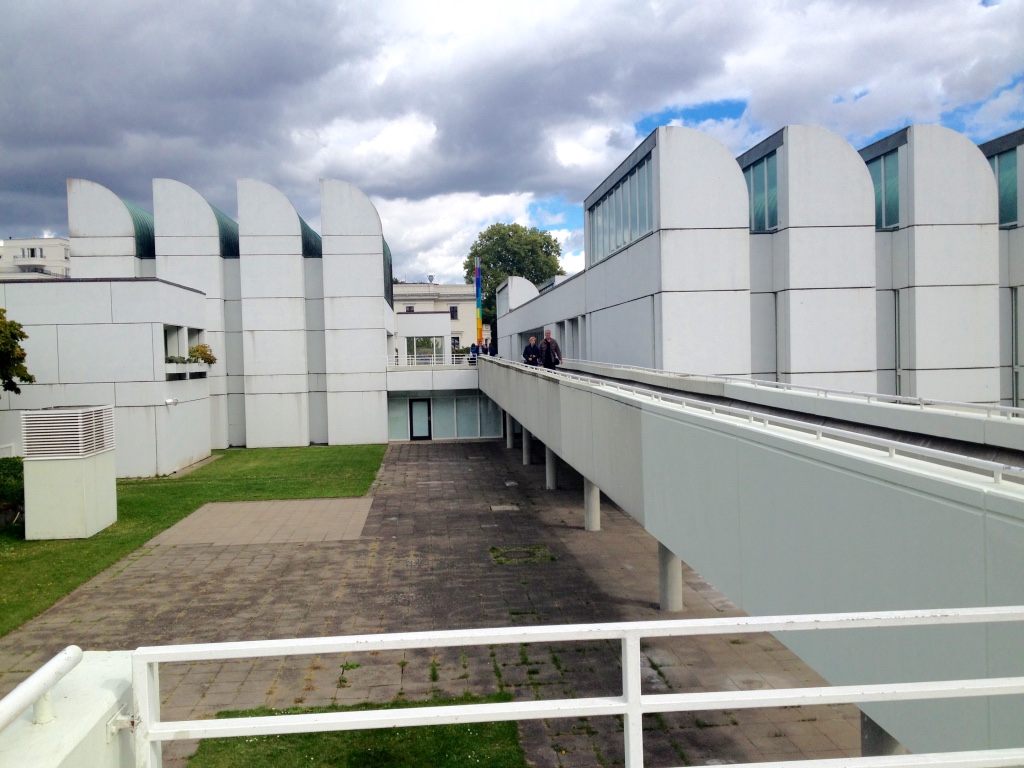 When we were in Berlin in 2005, we missed the Bauhaus-Archiv Museum because it was being renovated.
When we were in Berlin in 2005, we missed the Bauhaus-Archiv Museum because it was being renovated.
This time we made a point to go there. It is highly interesting to see the many examples of modern design in architecture, furniture, ceramics, metal work, painting and graphics art.
Works of Bauhaus Founder Walter Gropius (who also designed the Berlin facility, which opened in 1979) and famous teachers and artists such as Paul Klee, Vassily Kandinsky, Johannes Itten, Ludwig Mies van der Rohe and others are exhibited.
Also, we were reminded that the Bauhaus, which operated from 1919 to 1933 in Weimar, Dessau, and Berlin counted among the 20thcentury's most important schools of architecture, design and art.
Potsdamer Platz
The “Potsdamer Platz” is a major public square and 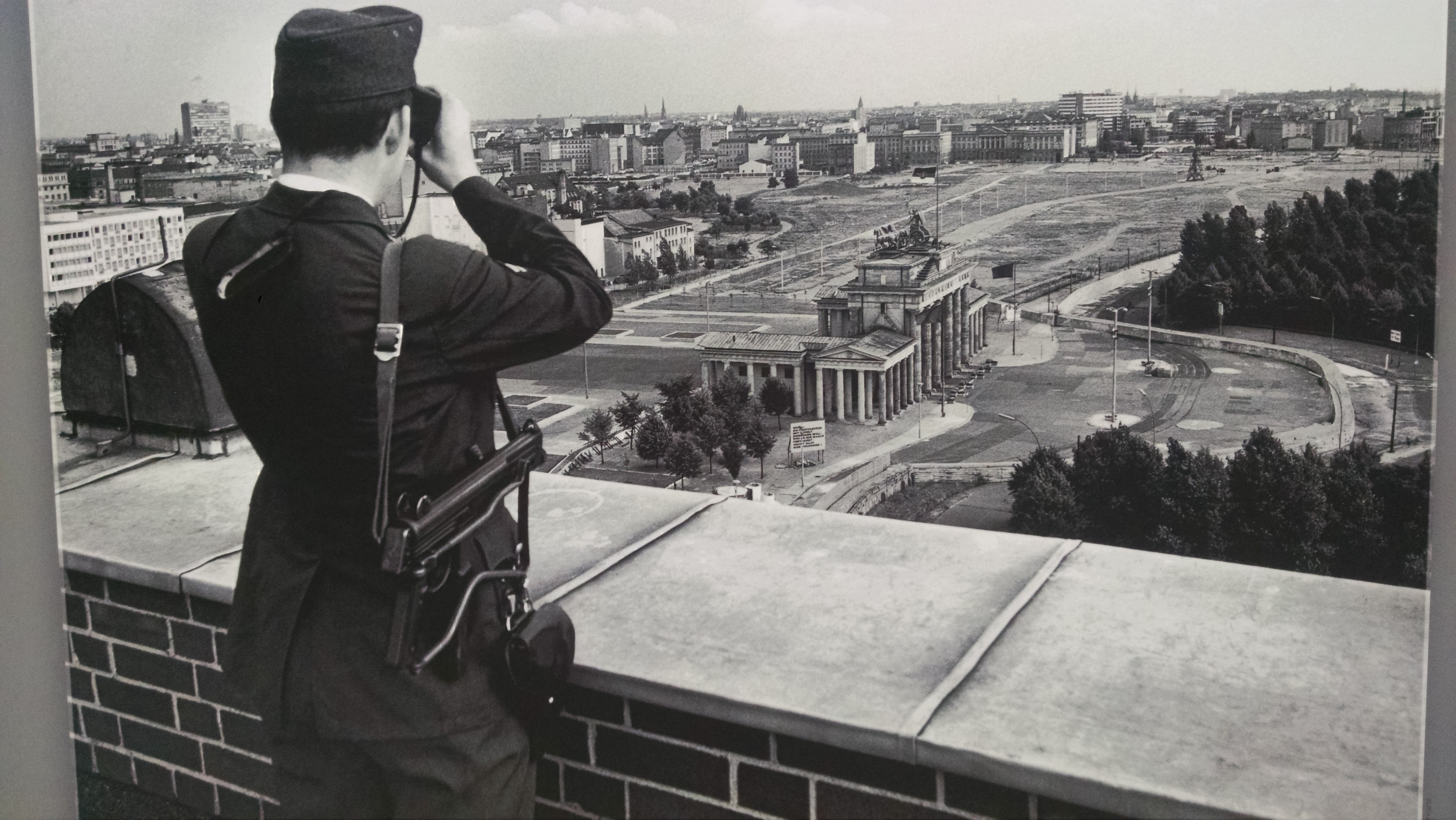 intersection located less than a mile south of the Brandenburger Tor.During Word War II, it had been completely destroyed. Bisected by the Berlin Wall after 1961, it remained a desolate wasteland until Reunification. Then, it became Europe's largest building site.
intersection located less than a mile south of the Brandenburger Tor.During Word War II, it had been completely destroyed. Bisected by the Berlin Wall after 1961, it remained a desolate wasteland until Reunification. Then, it became Europe's largest building site.
In the picture, the guard is looking across the Brandenburger Tor towards the Potsdamer Platz!
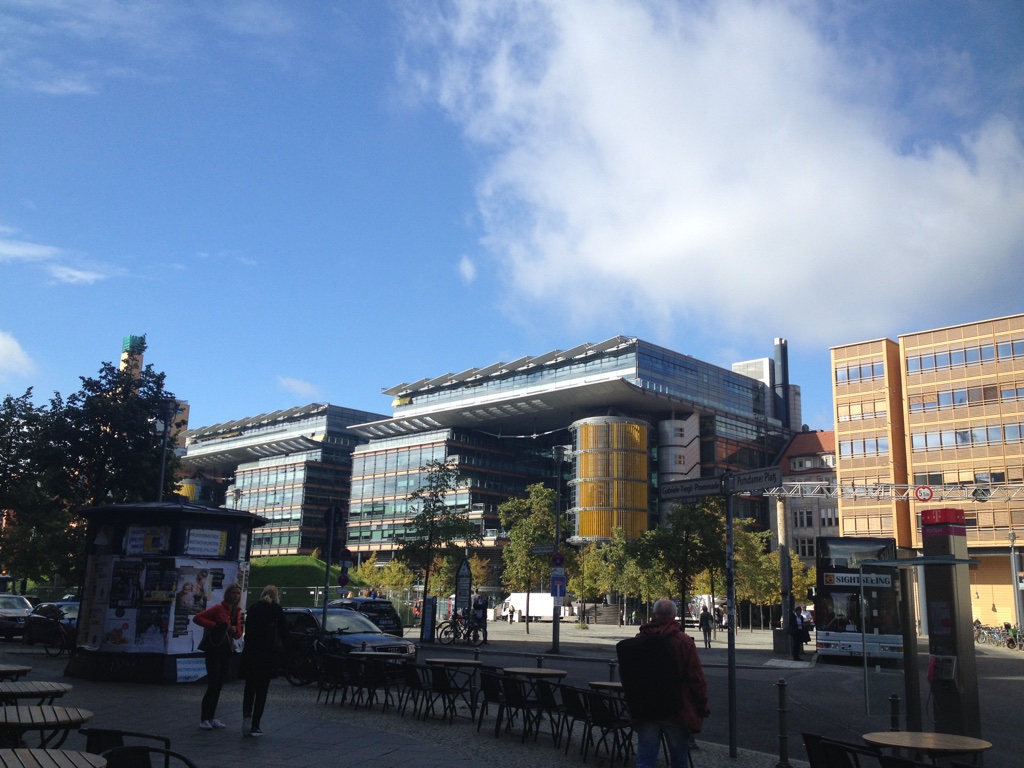 By 2005, major structures of the masterplan had already been erected, e.g. the Sony Center. Now in 2015, even more buildings, hotels, office towers, and a complex of buildings by the Italian architect Renzo Piano have been completed.
By 2005, major structures of the masterplan had already been erected, e.g. the Sony Center. Now in 2015, even more buildings, hotels, office towers, and a complex of buildings by the Italian architect Renzo Piano have been completed.
In one of Piano's shopping arcades, we discovered a fascinating exhibition documenting the 25 years since the fall of the wall.
In addition to the historic pictures and mementos, there were pieces of the notorious wall, as well as an old “Trabi” (the East German 2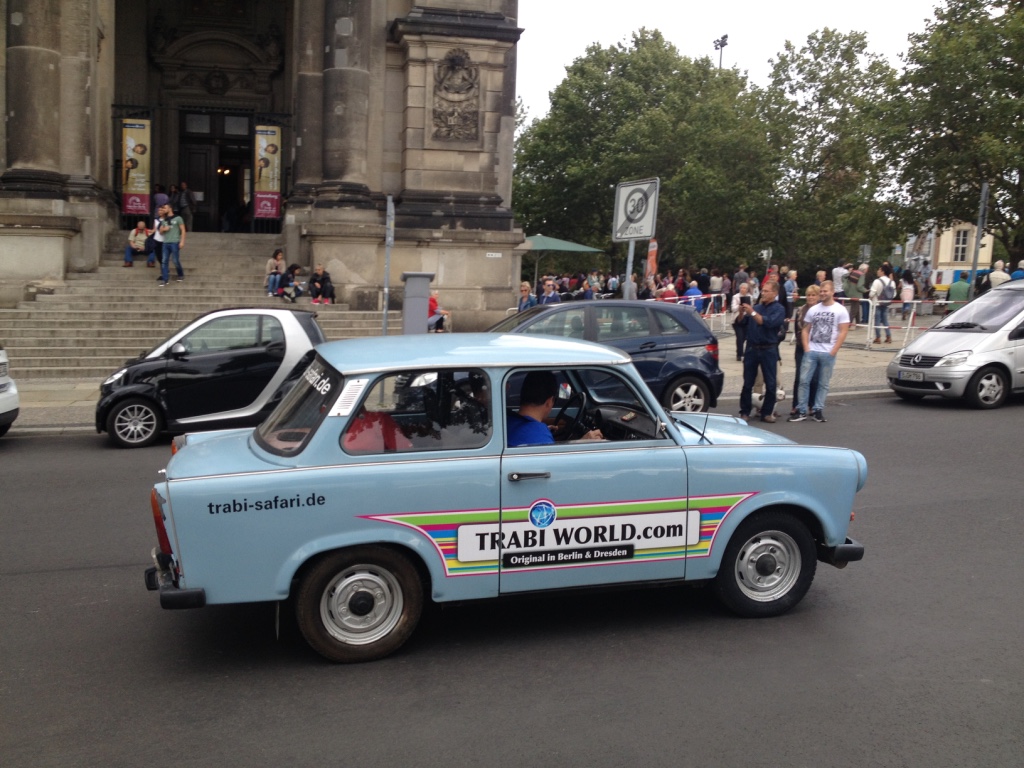 cycle engine Trabant”). We later saw (and smelled) more Trabis on Berlin's streets as "Trabi-Safaris" have now even become a tourist staple!
cycle engine Trabant”). We later saw (and smelled) more Trabis on Berlin's streets as "Trabi-Safaris" have now even become a tourist staple!
Berlin is today still one of our favorite cities. We hope to be back soon to further explore the city and again make some new discoveries.
